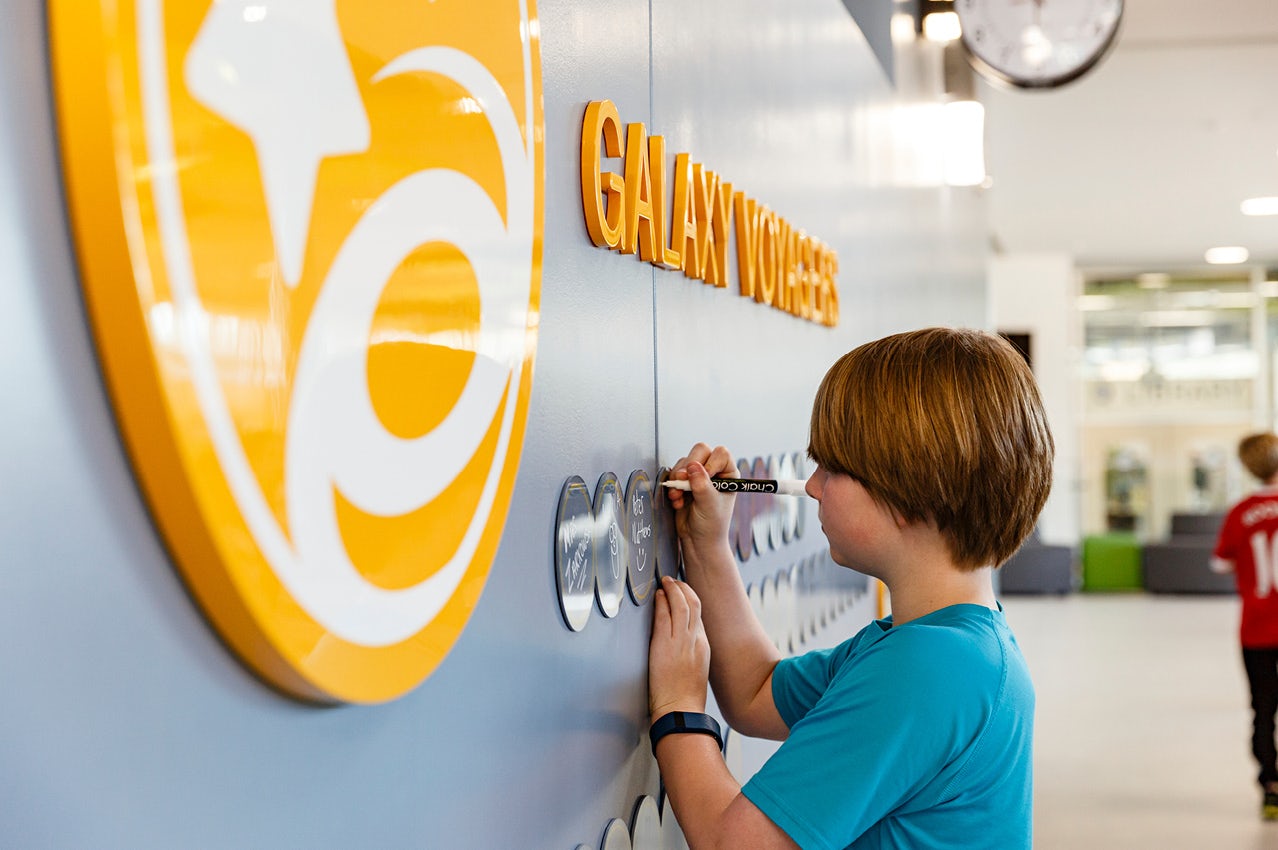This article was originally published by the Society for Experiential Graphic Design and describes how theming and wayfinding at Discovery Elementary School make it a unique place that students and teachers are proud to call their own.
While Arlington Public Schools has rebuilt, renovated, or built additions to many of the existing schools throughout the County, Discovery Elementary School is the first new elementary school to be built in Arlington, Virginia in more than a decade. The goal was to address growing student enrollment in Arlington while reaching for the highest standards possible – in instructional space as well as sustainability, operating costs, and flexibility.
The school was designed to be a "net zero" energy building, meaning that the amount of energy provided by on-site renewable energy sources is equal to the amount of energy used. Discovery Elementary is anticipated to become the first net zero energy elementary school in the Mid-Atlantic and the largest in the United States. To this end, careful attention was focused on designing and building a school that supports how and where students learn. Every nook and cranny of the school is arranged to create a seamless integration between design, sustainability, and learning. Recognizing that students are the creators of our collective future, Discovery Elementary School sets the stage for the development of the skills necessary for long-term stewardship of our world.
"Because Discovery Elementary is net zero, we focused on sustainability as a theme, as well as exploration— we learned that John Glenn was a local fixture and used to run on the track on campus," says Brittney Butler, Director of Environmental Graphics at VMDO Architects.
The project budget and timing were also a priority, and challenge. Construction ran until the day before school opened to students, so the environmental graphics team implemented a phased install starting with code signage, followed by wayfinding and educational signage which was installed during school breaks and holidays. The VMDO team focused on using cost-effective, yet durable materials to maximize the project budget while maintaining the intended color, iconography and illustrations as the focal points.
The design team created a kid-centric, place-based, wayfinding narrative that went beyond navigation to support a larger vision of spatial interaction. This multimodal approach supports spatial organization while also engaging and educating users as they interact with the building and develop relationships with the space. Three main goals informed the project’s design approach:
1. Cultivate a deep understanding of the client and users
2. Create a resonant story, including wayfinding visuals, that is visually and emotionally appealing to the client and users
3. Design a space that – through various scales, materials, locations, and sensory touchpoints – serves as a teaching tool to activate learning and engage students in the educational process
Once the wayfinding scope was established, a community-based design process empowered students to vote on the school mascot, colors, and school name. The “Discovery Explorers” name reflects the forward-looking, inquiry-based learning that takes place in the building and also serves as a tribute to John Glenn, who lived adjacent to the site when he became the first American to orbit the earth in 1962. In 1998, while still a sitting senator, Glenn returned to space as a crew member of the space shuttle “Discovery,” becoming the oldest person to fly in space.
While the branding inspires school-wide student ownership (echoed in design details such as a slide anyone can go down at any time), the wayfinding helps carefully shape different grade-level environments that reflect each grade’s expanding curriculum and identity. As students progress through the school, their world expands—with the first floor themed around earth eco-systems and the second floor themed around the sky and solar system. Students start out as Backyard Adventurers in Kindergarten and finish Fifth Grade as Galaxy Voyagers. This storyline is graphically communicated along an entry wall highlighting each Explorer grade level, where students on their first day of school are able to “make their mark” in their expanding world.
Read the full article on segd.org.

